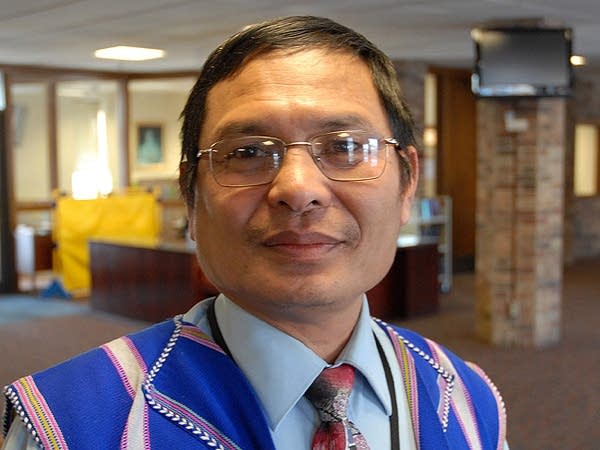Karen celebrate Year 2749, and a decade in Minnesota
Go Deeper.
Create an account or log in to save stories.
Like this?
Thanks for liking this story! We have added it to a list of your favorite stories.

Happy 2749.
As in the year twenty seven forty nine. That's according to the calendar of the Karen, just one of the hundreds of ethnic minorities that populate Myanmar -- or what the U.S. government still calls Burma.
Anyone wondering about those other 739 years should know that the Karen, who officially celebrate the new year on Jan. 5, have a long history.
"The Karen people, they are pretty organized with counting the year and the history," explained Eh Taw Dwe, a translator and one of the Minnesota organizers of the Karen New Year. "Thousands of years ago, they came from Mongolia. That's how they started. So it was way before Christ."
Turn Up Your Support
MPR News helps you turn down the noise and build shared understanding. Turn up your support for this public resource and keep trusted journalism accessible to all.
Now the Karen are in the midst of what could be another great migration, as they're being driven out of their long-adopted homeland. They're one of about 200 ethnic minorities in Mynanmar, and the last with any autonomous presence in the country. Attacks by the military have forced tens of thousands of Karen to flee to a string of refugee camps in Thailand.
[image]
From there, they've followed the trail blazed by Hmong refugees before them, to Minnesota.
By all appearances at the New Year's celebration, the Karen have officially arrived.
From a bus load of refugees living in downtown St. Paul, the Karen community has now grown to nearly 3,000 people. It was enough to draw a standing-room-only crowd to Roseville Lutheran Church on Sunday for a day of singing, dancing and celebration.
St. Paul school superintendent Valeria Silva paid a call and the Census Bureau even set up an outreach booth.
Wilfred Tun Baw, executive director of the Karen Organization of Minnesota, the community's formal social organization, was among the first Karen to reach the Twin Cities ten years ago.

"When I arrived to the airport, they brought us to the church, and then we lived in the church basement for nearly two months," he said. "We just had between 12 and 15 Karen families only in Minnesota. It was very, very tough for us."
But Tun Baw and his fellow Karen had something many refugees don't -- a centuries-old connection with the West.
Baptist missionaries were first sent to Burma in 1813, where they made thousands of Karen converts.
The descendants of those converts were the first to arrive in Minnesota, where the Baptist church welcomed them again.
"The interesting thing about the Karen is that in their own legends, they had a story about a white brother that would return to them a lost golden book, said Bill Englund , pastor at First Baptist Church in downtown St. Paul, where the Karen first took shelter.

"So when missionaries showed up with a Bible and this good news," Englund said, "they immediately adopted it not as some kind of Western or foreign idea, but as their own book being returned to them."
About half of the Karen who fled Myanmar are Baptists, and now about half of Englund's congregation are Karen.
That's just one measure of how the Karen are adopting Minnesota as their new home.
Karen community organizers say they're seeing a secondary migration to the state. Karen who initially went to other parts of the United States, are now heading for Minnesota because translators and language services are better here.
Because they're refugees and work legally, some are replacing other immigrants in meat processing centers such as Worthington and Albert Lea.
The Karen may be a very familiar story for Minnesotans who have watched her own Hmong community grow, said State Senator Mee Moua, a southeast Asian immigrant.

"I could foresee where Minnesota does become the drawing point, or sort of the home ground for the community," she said.
It could be a significant community.
The Obama administration reported last fall that 117,000 refugees live in nine camps on the border between Thailand and Myanmar.
The United States has been taking in those refugees -- as well as some from Malasia -- at the rate of about 17,000 people a year in the last three years, according to the U.S. State Department.
Minnesota likely will continue to be a destination, said Margaret Burkhardt, a program oficer with the State Department's Bureau of Population, Refugees and Migration.
"I can see that Karen, if they continue to come, which at least they will at least this fiscal year, and most likely next, I think you will continue to see them go to Minnesota," Burkhardt said. "Because the feedback to Thailand is good."
So far, the numbers are small -- about 500 a year. But officials in Minnesota say half of the refugees who came to the state last fall were from Myanmar, most of them Karen. Those refugees in the last year have outnumbered incoming Somali refugees by about 2 to 1.




